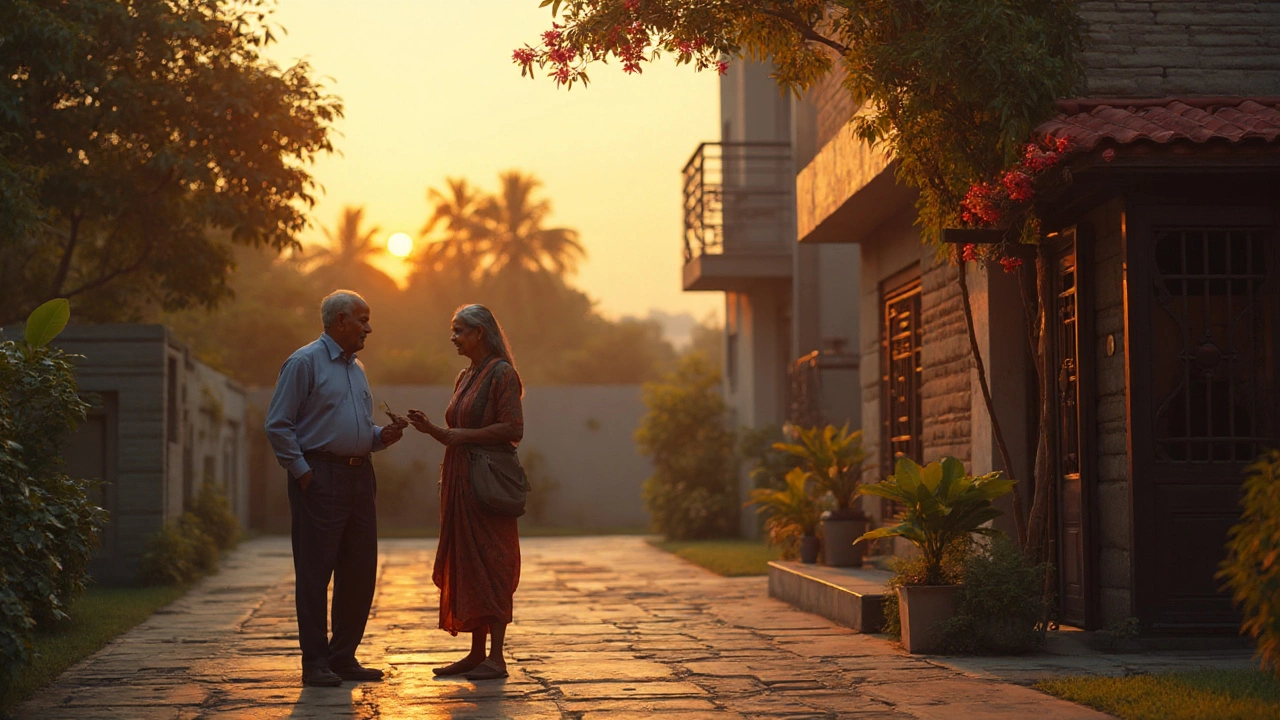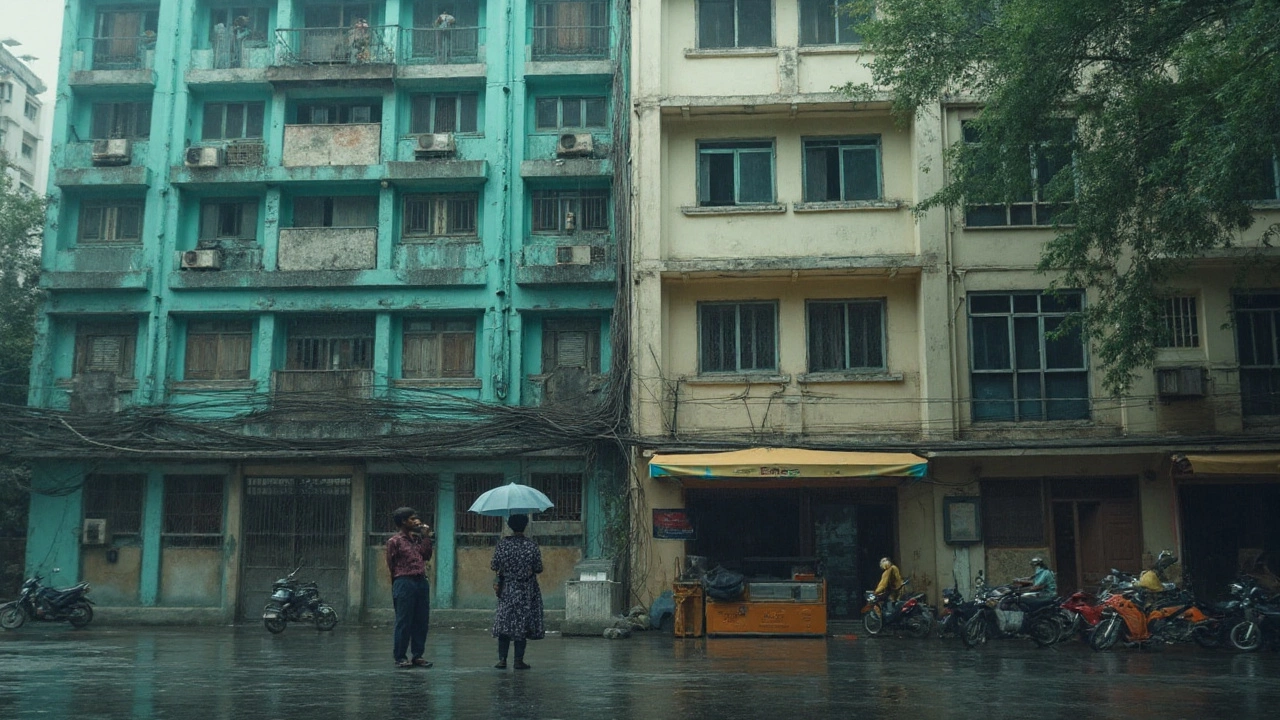Ask ten buyers what the worst-looking house on the street is, and you’ll get ten different answers-until the open home’s over and the price history drops. Here’s the truth: the “least desirable house style” isn’t one single look. It’s a pattern. Design that fights the way people live today tends to sit longer, sell for less, and cost more to own. Before we start pointing fingers at split-levels or faux-Tuscan facades, define the idea.
Least desirable house style is a real estate concept describing a home design that attracts fewer buyers, lingers on the market, and/or trades at a discount versus local medians due to layout, maintenance risk, energy performance, or cultural fit.
TL;DR
- There’s no single worst style everywhere; desirability is local and driven by layout, maintenance, and market norms.
- Frequent underperformers in many suburbs: split-levels, poorly proportioned McMansions, dated faux-Mediterranean, and homes with known building-envelope risks.
- Look at five signals: days on market, price vs. comps, maintenance profile, energy costs, and buyer pool size.
- If you already own one, you can fix the pain points: open the plan, right-size the facade, upgrade the envelope, and simplify finishes.
- Local exceptions matter. A ranch near parks can be hot; a concrete box in a coastal winter climate, not so much.
What “least desirable” really means in practice
It’s not about personal taste. It’s about market friction. Agents and appraisers look at measurable stuff: how long a place sits, how many people walk through, and how far the price drifts from the neighborhood median.
- Resale friction: Fewer showings, fewer offers, higher price cuts.
- Layout mismatch: Families want social spaces near kitchens, privacy for bedrooms, and fewer awkward stairs.
- Maintenance risk: Complex roofs, stucco in wet climates, or cheap windows drain budgets.
- Energy costs: Poor insulation and leaky envelopes scare owners who track monthly bills.
- Financing hurdles: Some styles (or construction types) trigger lender conditions.
Industry reports back this up. The National Association of Realtors’ Remodeling Impact studies show buyers consistently value function-better kitchens, improved energy efficiency, and workable layouts-over ornament. Zillow’s style-premium analyses over the years have found authentic, well-done Craftsman and mid-century features can sell faster, while awkward, dated mashups lag. Local institutes (like RICS for valuation or MBIE in New Zealand for building guidance) echo the same driver: risk and usability move prices.
Usual suspects: styles that struggle and why
Let’s call out styles that commonly underperform in suburban and exurban markets-and where they can still make sense.
Split-level house is a multi-level design popular from the 1960s-1980s that stacks living areas on half-stories connected by short stairs. The good: efficient footprint and separation of spaces. The rub: choppy flow, lots of steps, low ceilings, and kitchens cut off from living rooms. Families with toddlers or older buyers often pass. In school-zone suburbs, this style can sit unless updated with more open circulation.
McMansion is a large, mass-built house (often 1990s-2000s) with oversized volumes, many rooflines, mixed historical motifs, and budget-grade materials. The problem isn’t size; it’s proportion and build quality. Multiple dormers, jumbo two-story foyers, and thin stucco or vinyl details add maintenance without adding joy. In newer subdivisions, buyers now lean smaller but better built. That said, if the structure is solid and the plan flows, strategic facade simplification and envelope upgrades can rescue value.
Manufactured home is a factory-built dwelling constructed to federal or national codes and transported to site, often on a chassis. In urban cores and many suburbs, these face stigma, land-lease complications, and financing limits. In rural areas with land ownership and recent models meeting higher energy codes, they can be smart buys. Appraisal and loan conditions are the swing factors here, not just style.
Brutalist architecture is a mid-20th-century style characterized by exposed concrete, blocky massing, and utility-forward detailing. For single-family homes, it’s rare and polarizing. Concrete ages well structurally but can feel severe and cold in cloudy climates without warm interiors and glazing. A design purist might love it; the average buyer may not.
Tuscan Revival (often called neo-Mediterranean) is a late-1990s/2000s aesthetic with stucco walls, red tile roofs, arched openings, and heavy scrollwork. In dry, sunny climates, this can be fine. Drop it into a wet, cool region and you pick fights with moisture control and color palettes, especially if the stucco is thin and detailing is decorative rather than functional. Buyers read “maintenance risk,” not “romance.”
Mid-century modern architecture is a 1945-1975 movement with low-slung roofs, open plans, post-and-beam structure, and large glass. Here’s a twist: it’s often desirable-even commanding premiums-when authentic and well-maintained. When it’s a cheap imitation with tiny windows and fake beams, it flips and underperforms. Authenticity matters.
Craftsman architecture is an early-20th-century style emphasizing natural materials, deep eaves, built-ins, and human-scaled porches. In many markets, Craftsman cues sell because they telegraph warmth and detail. But if the porch faces a six-lane road and the floor plan is chopped into small rooms, even charming trim won’t save it without updates.
Ranch-style house is a single-story, long-plan home popular from the 1950s onward with simple roofs and easy indoor-outdoor flow. These used to be “starter home plain.” Now they’re aging-in-place gold, especially with level entries and wide halls. Add insulation, larger windows, and a better kitchen, and they move fast.
Tiny house is a very small dwelling, often 100-400 sq ft, designed to minimize footprint and cost. Brilliant for minimalists and backyard rentals. Tough for mainstream buyers with kids, storage needs, and zoning hurdles. Financing can be more like an RV than a house.
Location changes the answer-sometimes dramatically
Style desirability is famously local. Climate, codes, and buyer demographics can flip a “bad” style into a great one.
- Climate fit: Stucco and tile sing in Phoenix; they struggle in rainy, windy regions without deep overhangs and robust flashing.
- Seismic or storm risk: Unreinforced masonry looks charming until an earthquake map enters the chat. Wood frames with proper bracing fare better.
- Walkability and access: A small home near transit and parks often beats a big house miles out, even if the facade is plain.
- Local comps: If 70% of the neighborhood is ranch, a lone Brutalist cube risks a smaller buyer pool, and vice versa.
Regional case study worth knowing: the leaky building crisis refers to widespread weathertightness failures in late-1990s-2000s homes with monolithic cladding and poor detailing, especially in New Zealand. Plaster-clad “Mediterranean” looks from that era often carry stigma and remediation costs. Government reports (e.g., MBIE) estimate tens of thousands of homes were affected; the style itself isn’t the culprit so much as the envelope execution. Buyers learned to ask tough questions about cladding, flashing, and moisture testing-and discounts followed where risk felt high.
How to score a home’s desirability (before you buy)
Use a simple rubric. You’re not guessing; you’re weighing trade-offs. Put a number 1-5 for each, then add them up (higher is better):
- Layout liveability (weight 3): Sightlines, kitchen adjacency, stairs, bedroom privacy.
- Envelope & energy (weight 3): Insulation, windows, air sealing, shading, roof condition.
- Maintenance complexity (weight 2): Rooflines, cladding, window count, hard-to-reach details.
- Market fit (weight 2): Does it match local comps and buyer expectations?
- Financing & compliance (weight 1): Any red flags for lenders or councils?
Run this on two homes: a 1999 faux-Tuscan with a five-gable roof, and a 1968 split-level that just opened up the kitchen. The split-level often wins on layout and maintenance after the update, even if the facade is plain. That’s how investors think.
Comparison: which styles often face headwinds?
| Style | Typical friction | Market impact | Fixability | Smart upgrades |
|---|---|---|---|---|
| Split-level | Choppy flow, stairs, low ceilings | Smaller buyer pool in family suburbs | High (remove walls, add light) | Open kitchen, new stair guardrails, daylight tunnels |
| McMansion | Proportions, cheap details, complex roof | Discounts where buyers prefer quality over size | Medium (facade simplification) | Fiber-cement cladding, simpler trim, attic insulation |
| Manufactured | Stigma, financing, land-lease issues | Depends on land ownership and region | Medium (land + permanent foundation) | Skirting upgrades, insulation, porch addition |
| Brutalist | Perceived coldness, limited comps | Polarized; niche premium or niche discount | Low-Medium (warm interior materials) | Wood floors, radiant heat, landscaping |
| Tuscan Revival | Moisture risk in wet climates, dated trim | Discount outside Sun Belt-like climates | Medium (envelope + aesthetic refresh) | Rainscreen cladding, deep eaves, neutral palette |
| Ranch | Plain facade, aging systems | Strong with aging-in-place buyers | High (easy plan changes) | Window enlargement, insulation, patio doors |

If you already own a “less desirable” style, do this
Desirability is not destiny. Attack the pain, not just the paint.
- Fix the flow first. Remove a non-load-bearing wall between kitchen and living. Add a peninsula. Families buy flow.
- Right-size the facade. Strip fake shutters, reduce trim clutter, unify window styles, and simplify roof edges. Clean lines read pricier.
- Upgrade the envelope. Insulation, air sealing, flashing, and quality windows beat quartz counters for ROI in most climates.
- Make entries safe and obvious. Clear path, covered stoop, good lighting, and a door that feels solid.
- Landscape like you mean it. One tree for shade and scale, layered shrubs, and tidy edges. Curb appeal is a multiplier.
- Document the upgrades. Buyers and lenders love paperwork: permits, invoices, and specs turn doubt into offers.
Cost sanity check: In many markets, envelope upgrades ($8k-$25k depending on size and climate) can reduce energy bills 15-30%, which buyers understand even if they don’t talk R-values. A $3k-$7k facade simplification can outshine a $15k bathroom when it comes to showings.
Where data and taste meet
Citation time, minus the footnotes. NAR’s buyer trend reports keep repeating the same theme: function beats froufrou. Remodeling Impact Reports show energy and layout projects recoup well when selling. Zillow’s style and keyword analyses have repeatedly found premiums for authentic, well-executed historical cues (Craftsman, true mid-century) and drag for awkward mixes or high-maintenance details. Local building authorities emphasize envelopes and risk management. That triangle-layout, envelope, context-is your compass.
So, what’s the least desirable house style? In many suburbs, the answer you’ll see in price cuts is the dated split-level or the overdone McMansion with fussy trim and a roof that looks like origami. In wet, windy regions, it’s any thin-stucco, complex-detail house that hints at weathertightness issues. In urban neighborhoods with historic districts, it’s the generic box that ignores the street.
Related concepts that steer value
- Curb appeal: First impressions drive who books showings; simple, coherent facades win.
- Universal design: No-step entries and wider doors broaden your buyer pool.
- Energy performance: Air sealing, insulation, and heat pumps show up in buyer questions now.
- Authenticity: A clear, consistent style-old or new-beats a costume party of motifs.
- Comps and absorption: If your style is rare locally, check how the last three sold. That tells you days-on-market risk.
Style spotlights (quick definitions, buyer signals, fix ideas)
Here are fast reads of common styles you’ll run into-and what to do about them.
Victorian architecture is a 19th-century family of styles with ornate trim, bay windows, steep roofs, and vibrant color schemes. Buyer signal: love the charm, fear the upkeep. Fix: target systems first-wiring, plumbing, sash restoration-before cosmetic paint.
Mid-century: If it’s authentic, protect the bones and upgrade glass and HVAC. If it’s a 1990s imitation, align interior finishes with the structure (no heavy Tuscan in a beam-and-glass home).
McMansion: Simplify the entry, tone down trim, standardize window grille patterns, and improve attic insulation. You’re turning “big but busy” into “big but calm.”
Split-level: Remove the half-wall at the stairs, widen openings, add a window or two, and bring in consistent flooring to link spaces.
Ranch: Add daylight and egress-friendly windows, a proper mudroom, and a back deck that makes the plan feel twice as big.
Manufactured: Secure title to land, ensure a permanent foundation, and document energy upgrades to smooth lending and appraisal.
Who should buy what?
- Busy families: Favor flexible layouts, durable finishes, and yards over ornate exteriors. Ranch or well-opened split-level can be perfect.
- Design purists: True mid-century or Craftsman with honest materials. Expect to pay for authenticity.
- Investors: Look for under-loved styles with fixable layout and envelope issues. The discount is your margin.
- Downsizers: Single-level living with good daylight and low maintenance. Ranch wins again.
- Climate hawks: Styles with deep eaves, rainscreens, and cross-ventilation. Avoid thin stucco in rainy zones without robust detailing.
Frequently Asked Questions
Is there a single “worst” house style everywhere?
No. Desirability is local. Climate, building methods, buyer demographics, and neighborhood comps flip the answer. A stucco-heavy neo-Mediterranean may struggle in a rainy, cool region but looks normal in a dry, sunny market. A split-level can lag in family-heavy suburbs but move when updated and priced right in a tight inventory market.
Why do split-level houses often sell for less?
The short flights of stairs break up sightlines and make childcare and aging-in-place harder. Kitchens are typically isolated, ceilings can be low, and there’s no easy way to add a ground-floor bedroom suite. Open the plan, improve daylight, and add modern railings, and much of that drag disappears.
Are McMansions always a bad buy?
Not always. If the structure is sound and the layout works, you can simplify the facade, upgrade windows and insulation, and end up with a roomy, efficient home. The risk is maintenance on complex rooflines and dated trim. Price in those fixes, then compare to a smaller but higher-quality comp.
Which styles tend to hold value best?
Authentic Craftsman, well-kept mid-century, and practical ranches usually do well because they balance charm, function, and adaptability. Buyers reward homes that are easy to live in and maintain. Your local comps matter more than the label, though-study the last five sales of similar forms nearby.
How can I tell if a stucco house is high risk in a wet climate?
Look for deep eaves, kickout flashing at roof-wall junctions, drainage planes (rainscreens), and good window flashing. Ask for invasive moisture testing if the era is known for problems. Thin, monolithic cladding with complex intersections and no ventilation is a red flag. Documentation from qualified installers helps a lot.
Can I make a small, plain ranch feel high-end?
Yes. Enlarge a few windows, add a glass door to the yard, run consistent wood flooring, and keep the kitchen simple and bright. Upgrade insulation and HVAC for comfort. A tidy landscape with shade and path lighting finishes the look. It’s less about square footage, more about feel and function.
Do manufactured homes always have financing problems?
Not always. If the home is on owned land, on a permanent foundation, and meets the relevant building code with proper documentation, many lenders will work with you. Land-lease setups and older models can be tougher. A savvy loan officer can outline options upfront.
What single upgrade best boosts desirability?
Fix the floor plan. Removing one wall to connect kitchen, dining, and living often does more for showings and offers than fancy finishes. Pair it with good lighting and a clean facade, and you’ve solved most buyers’ first objections.

